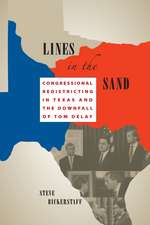From Majority Rule to Inclusive Politics
Autor Peter Emersonen Limba Engleză Hardback – 22 ian 2016
The matrix vote can also be used when:
• two or more parliamentary parties elect a coalition government
• one parliamentary party elects a government or shadow cabinet, or organizations in civil society elect their governing boards or executive committees
• any group chooses a fixed number of individuals to form a team in which each member carries out a different function
| Toate formatele și edițiile | Preț | Express |
|---|---|---|
| Paperback (1) | 381.21 lei 6-8 săpt. | |
| Springer International Publishing – 30 mar 2018 | 381.21 lei 6-8 săpt. | |
| Hardback (1) | 388.34 lei 6-8 săpt. | |
| Springer International Publishing – 22 ian 2016 | 388.34 lei 6-8 săpt. |
Preț: 388.34 lei
Nou
Puncte Express: 583
Preț estimativ în valută:
74.31€ • 77.59$ • 61.36£
74.31€ • 77.59$ • 61.36£
Carte tipărită la comandă
Livrare economică 15-29 aprilie
Preluare comenzi: 021 569.72.76
Specificații
ISBN-13: 9783319234991
ISBN-10: 3319234994
Pagini: 146
Ilustrații: XXVI, 146 p. 3 illus., 1 illus. in color.
Dimensiuni: 155 x 235 x 11 mm
Greutate: 0.42 kg
Ediția:1st ed. 2016
Editura: Springer International Publishing
Colecția Springer
Locul publicării:Cham, Switzerland
ISBN-10: 3319234994
Pagini: 146
Ilustrații: XXVI, 146 p. 3 illus., 1 illus. in color.
Dimensiuni: 155 x 235 x 11 mm
Greutate: 0.42 kg
Ediția:1st ed. 2016
Editura: Springer International Publishing
Colecția Springer
Locul publicării:Cham, Switzerland
Public țintă
ResearchCuprins
Introduction.- 2. Majority Rule: The Right May Be Wrong.- 3. Majority Rule in the West.- 4. The New Democracies.- 5. The GOAT is a GNU.- 6. Electing a Proportional All-Party, Power-Sharing Executive.- 7. Will it Work?.- Annex I: The Rules for an MBC.- Annex II: The Rules for a Matrix Vote Election.- Annex III: Examples of Valid and Invalid Ballots.- Annex IV: Sample Forms Required for a Matrix Vote Paper Count.
Notă biografică
Like Jean-Charles de Borda, Peter Emerson was initially a naval officer. After nine years in conventional submarines, he resigned his (British) commission to teach maths and physics in a school for the poor in Nairobi. It was here in Kenya, and later in Rwanda, that he questioned the basis of Western democratic structures: majority voting and majority rule. Then, in 1975, this son of an Irish Protestant father and English Catholic mother moved to Belfast, where, as in Africa, binary voting was seen to be both inaccurate and inadequate. He is now the Director of the de Borda Institute, working in conflict zones and developing countries: the Balkans, the Caucasus, East Africa and most recently, China.
Textul de pe ultima copertă
This book discusses voting procedures in collective decision-making. Drawing on well-established election processes from all over the world, the author presents a voting procedure that allows for the speedy but fair election of a proportional, all-party coalition. The methodology - a matrix vote - is accurate, robust and ethno-color blind. In the vote, the counting procedure encourages all concerned to cross the gender as well as any party and/or sectarian divides. While in the resulting executive each party will be represented fairly and, at best, with the consensus of parliament, every minister will be the one most suited to his/her new portfolio. By using preferential voting and thus achieving consensus, the matrix vote will be fundamental to the resolution of conflicts.
The matrix vote can also be used when:
• two or more parliamentary parties elect a coalition government
• one parliamentary party elects a government or shadow cabinet, or organizations in civil society elect their governing boards or executive committees
• any group chooses a fixed number of individuals to form a team in which each member carries out a different function
The matrix vote can also be used when:
• two or more parliamentary parties elect a coalition government
• one parliamentary party elects a government or shadow cabinet, or organizations in civil society elect their governing boards or executive committees
• any group chooses a fixed number of individuals to form a team in which each member carries out a different function
Caracteristici
Offers a complete guide on electing majority or all-party, power-sharing coalitions Gives examples, clearly depicted in tables, to illustrate the different voting procedures Shows how to achieve consensus by preferential voting Includes supplementary material: sn.pub/extras

















